Like every Ferrari, the F50 supercar featured technology developed on the track. Crucially, it also used components and a construction technique directly derived from F1. Little wonder it was such a thrilling car to drive.
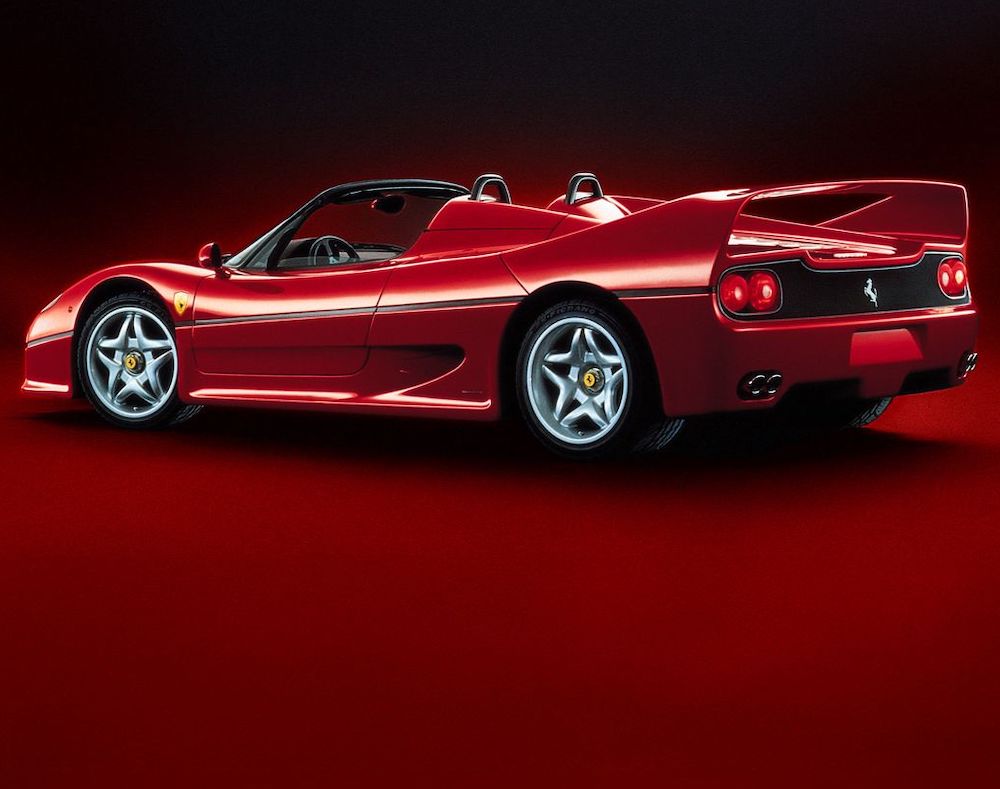
Although several supercars have been marketed as ‘Formula One cars for the road’, none got anywhere near as close as the F50, Ferrari’s third limited-edition supercar after the GTO (1984) and F40 (1987).
Following the F40 was a tough task. When launched, the F40 was the world’s fastest road car, and the first to exceed 321km/h (200 mph). It was also the most exciting supercar of its day: a sensory overload of beauty, intoxicating driver interactivity and superb performance.
Watch the legendary Ferrari F50 in action…
To elevate the new F50 above its hallowed predecessor was a huge challenge, so turning to the Formula One team for inspiration and support made good sense. But the end result was much more than just F1 technology being transferred to the road (which was nothing new for Ferrari). Much more significantly, the F50’s major components were all directly derived from F1 – including its engine, suspension and its carbon composite tub.
In place of the turbocharged V8 that powered the GTO and F40, the F50 had a larger capacity V12. And it wasn’t just any V12. It was derived from the engine used in the 1990 F1 car, with five valves per cylinder and a capacity boosted from 3.5 to 4.7 litres. Maximum power was 520cv, up from the F40’s 478cv. And while this naturally aspirated engine may have lacked the explosive acceleration of the F40’s twin-turbo V8, it more than compensated with its smooth revving and howling V12, which was especially tuneful as you approached maximum power at 8500rpm. Some have called the F50 engine the greatest V12 ever built.
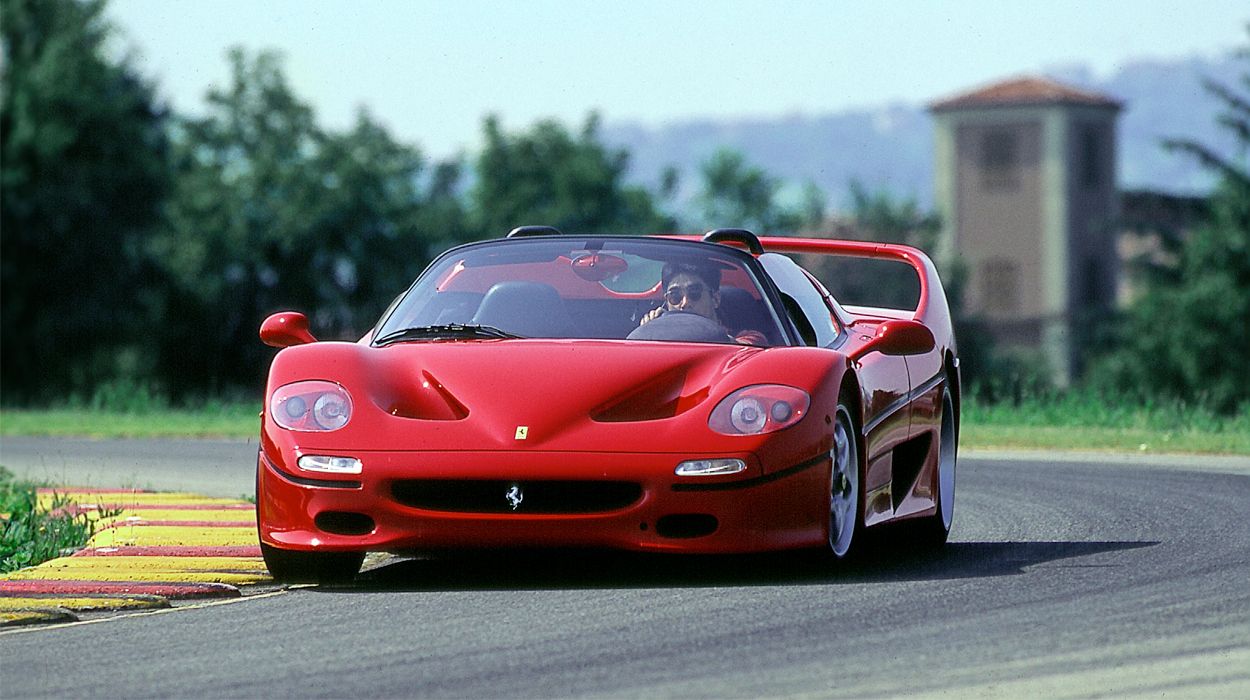
The F50’s mighty 4.7 litre V12 produced 520cv, and propelled the car from 0 to 100km/h in just 3.8 seconds before going on to a maximum speed of 325 km/h. These figures are impressive now, but back in 1995 they were nothing short of spectacular
The F1 tech continued throughout the car, and included a carbon fibre monocoque passenger cell to which the front suspension was directly mounted. Additionally, the V12 was bolted to the rear of the passenger cell as a load bearing member for the transmission and rear suspension, just as in an F1 car.
The advantages of this construction technique were greater structural rigidity, less weight and better handling – the reasons they’re used in F1. It was, however, virtually unheard of on a road car, or even in top-end supercars, as the vibration from the engine was fed directly into the passenger cell, causing unacceptable levels of noise, vibration and harshness (NVH). Yet careful development, and a wonderfully well-balanced V12, made the F50’s levels of refinement more than acceptable.
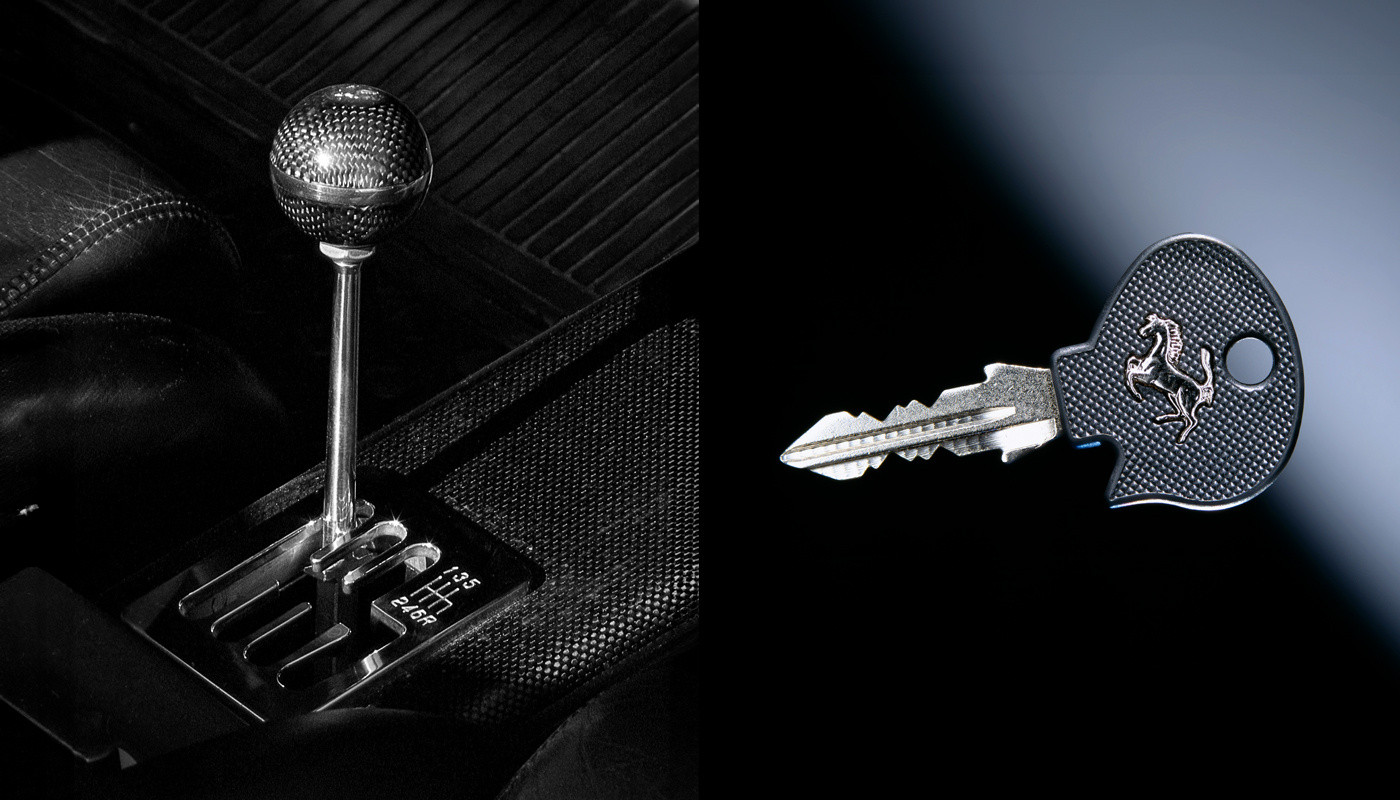
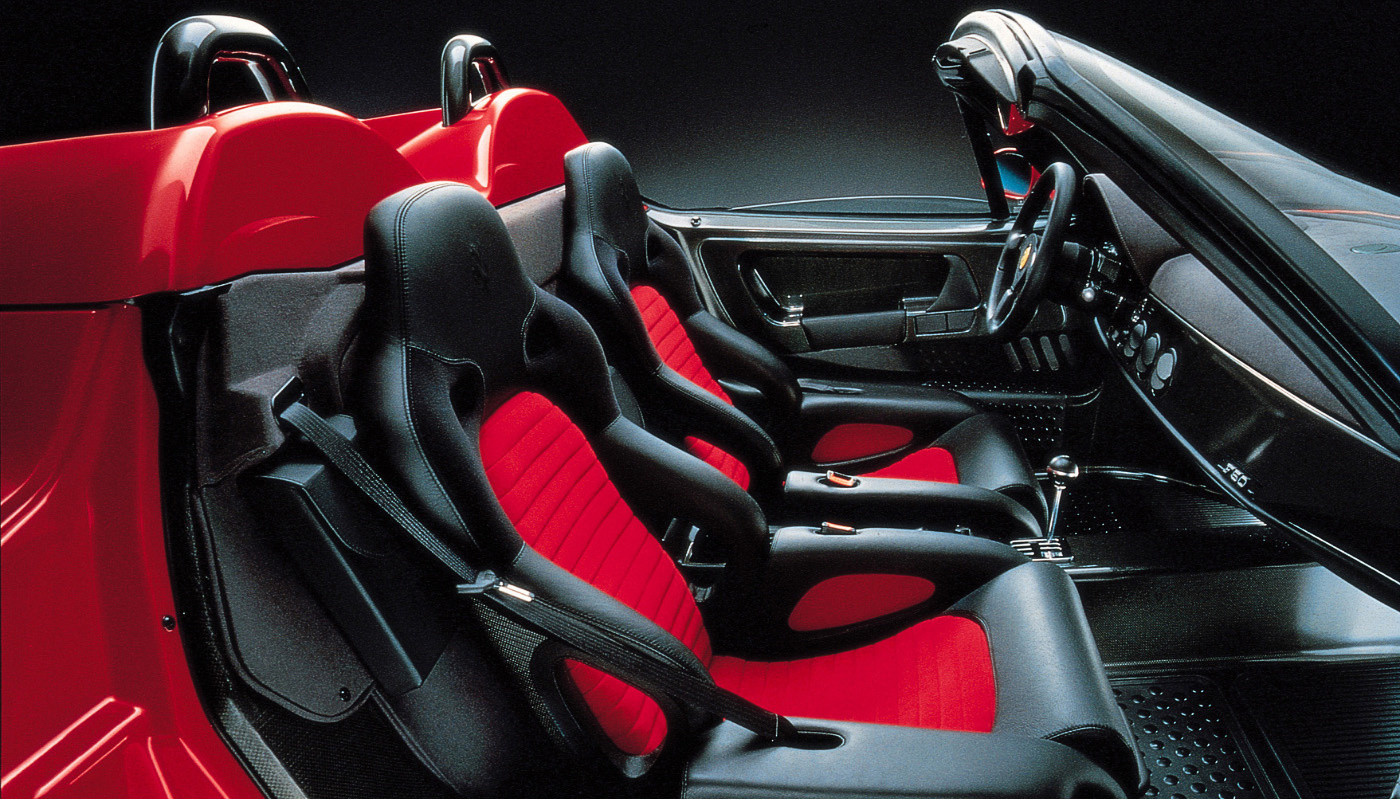
the F50’s V12 was derived from the engine used in Ferrari’s 1990 F1 car; the fabled gated manual transmission; this key unlocked serious performance; the beautifully assembled cabin offered few creature comforts
Nonetheless the ride was very firm, and the driving experience all-consuming. The F50’s suspension was also straight from Formula One and used a pushrod system with horizontally mounted springs and dampers. In F1 racing, this allows suspension components to be moved out of the airflow, therefore improving aero. This was an F1 car for the road, after all.
Brakes were cross drilled ventilated discs. There was no servo assistance, no ABS, and no power assistance for the steering either. The F50 was a very analogue car. It was also, unsurprisingly, very fast: top speed was 325 km/h, 0-100 km/h came in 3.8 seconds from rest. It may have had big shoes to fill, but it was quicker than the F40.
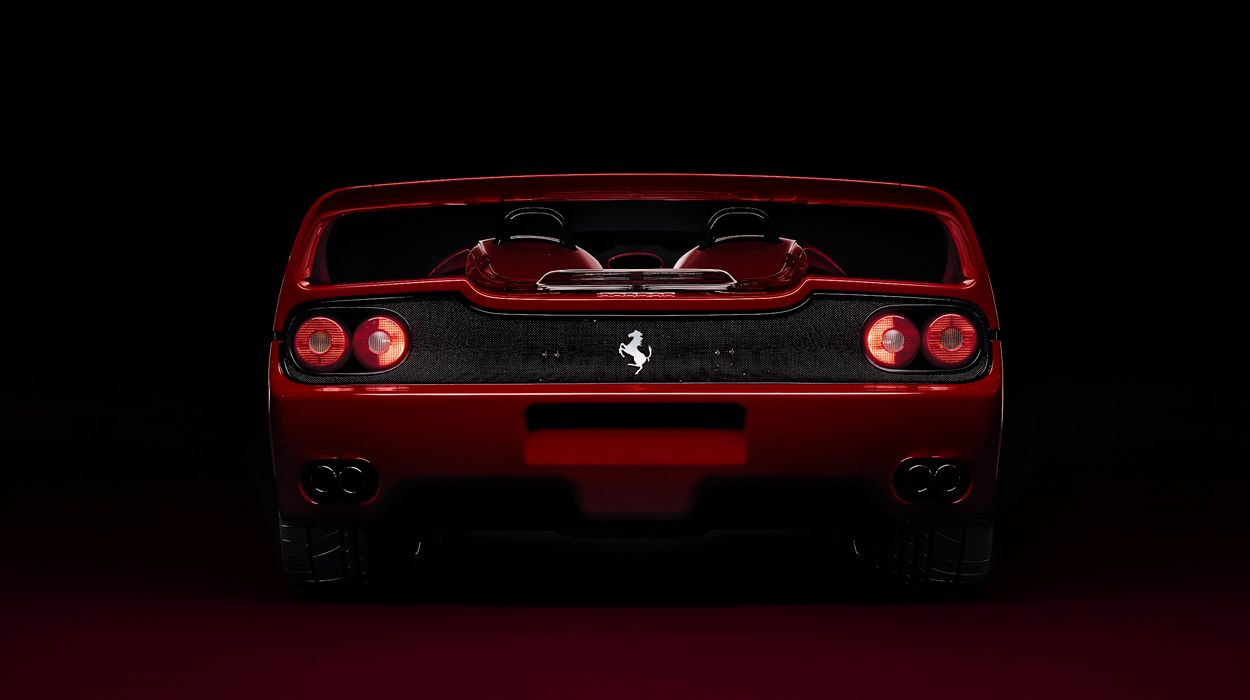
All the F50’s major components – including its engine, suspension and its carbon composite tub – were directly derived from F1. Even its rear end looked dangerously purposeful
Launched at the 1995 Geneva Show to celebrate Ferrari’s 50th anniversary – never mind that it was two years early – the F50’s production run lasted until 1997 and was capped at 349 cars.
To this day the F50 remains one of the most exciting Ferraris to drive, and some say the best. A wonderful engine and a superb chassis meant it was not just fast, but extremely controllable at speed. The GTO was a far more comfortable road car, and the F40 always felt more the wild stallion. But for sheer driver appeal, including the magic that only a great V12 can deliver, the F50 remains a supreme achievement.
Words: Gavin Green for ferrari.com
Video: Rowan Jacobs











